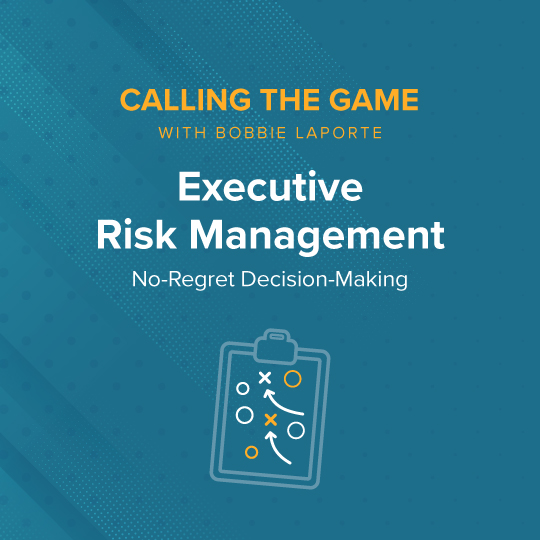In today’s fast-moving, ever-changing environment, being a leader requires a willingness to take on more risk—and make quick decisions even when you don’t have time to evaluate all possible options. Watch Bobbie LaPorte’s July 30 “Calling the Game” video to learn more:
Shifting from Deliberation to Confident Action in Leadership
Recently, in this space, I’ve been sharing how executive decision-making is different now and the implications for today’s leaders.
To recap – timelines have forever changed; leaders must now face the reality of needing to make split-second decisions when there is no clear path forward. With the pace at which things are changing in our world, we need to recognize that the cost of delay is much greater now than it was before.
Along with this new approach to decision-making comes a new definition of risk. The higher we move in an organization and the more responsibility we take on, the more we are asked to deal with ambiguity and risk. And in today’s environment, that can be a scary place to be for many leaders.
The Challenge of Decision-Making in Modern Leadership
Why do many leaders struggle with this new paradigm of rapid decision-making? The root of this challenge lies in the contrast between past and present business environments.
Many leaders honed their management intuition during times that were (relatively) stable, where change was predictable, and we valued the certainty that came from riding out the trends.
It often meant following an extended process of evaluating all the available options, partly to assure ourselves that we were on the right track but also to reduce the risk of making the wrong move. Our decisions have consequences – for us and our organization.
The answers, if there are any, are not as clear and straightforward as they were early in our careers.
We are now living in a world where no one knows how to plan for tomorrow. And that demands more action–less deliberation.
We can no longer make minimizing risk the primary focus of our approach to decision-making.
Evaluating risk must now take a back seat to taking in-the-moment action based on confidence in the knowledge that increased risk-taking and making mistakes is more acceptable now.
Every organization is different in how it supports risk-taking and the potential for making mistakes. However, shifting the culture and making this a more accepted practice is rapidly becoming the norm for leaders.
Consider a decision you made recently. Did you stall in moving forward? Did your level of confidence increase as you deferred your decision, or could you have quickly committed to a path forward, knowing that you could reverse course if the situation called for it?
This is what no-regret decision-making is all about. Every decision is a good one—until it is not.


